Paintings from the Worcester Art Museum
Through January 7
Tampa Museum of Art
Details here
What is your speed?
In a study some years ago researchers measured the pace of life in different cities. They marked a 60-foot stretch of sidewalk and timed how fast pedestrians walked this distance.
Averaging out, that became the speed of that city.
Of the 32 cities they observed, the fastest time was 10.55 seconds in Singapore, the slowest 31.6 seconds in Blantyre, Malawi. People in New York took 12 seconds. You can read about the study here.
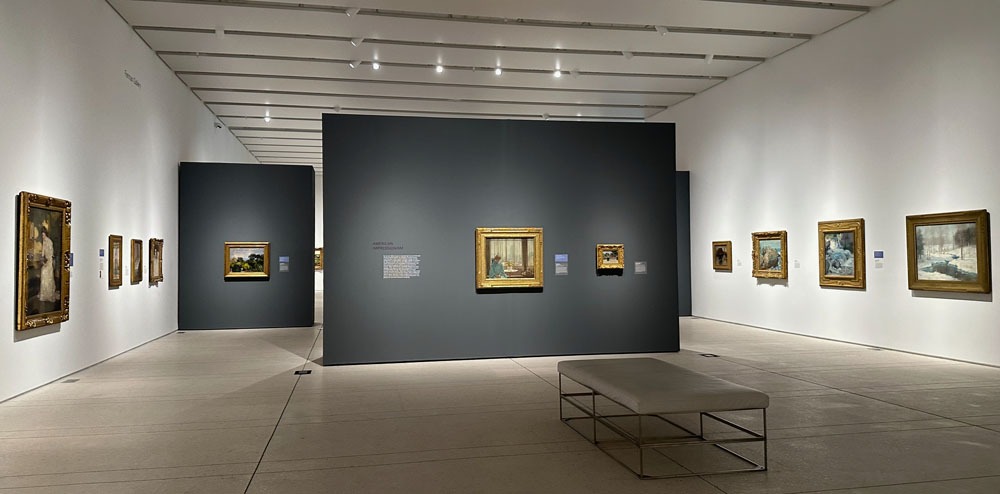
In a museum where I once worked as exhibition designer, sometimes I would go into the galleries and watch visitors move through the space and interact with the exhibits. It’s a university museum, the USF Contemporary Art Museum, with approximately 4,000 square feet of exhibition space divided into three main galleries.
Besides students rushing off to class and other variables, the record was this person who walked in, tracked through all the galleries and out the door in less than four minutes, almost faster than the fastest fast food service.
On the other side of the coin, recently I was the visitor walking through the galleries of Tampa Museum of Art where there’re several exhibitions that slowed my walk to a stop.
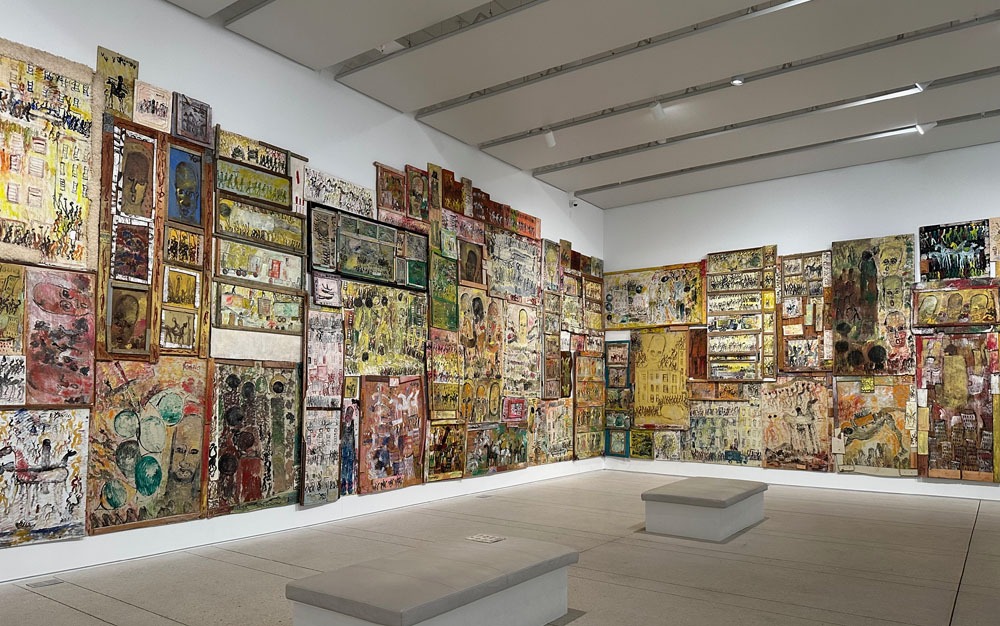
There’s Purvis Young from Miami’s Overtown neighborhood with his singular vision on an edge where his prolific output becomes a mural covering floor to ceiling the width of the gallery walls.
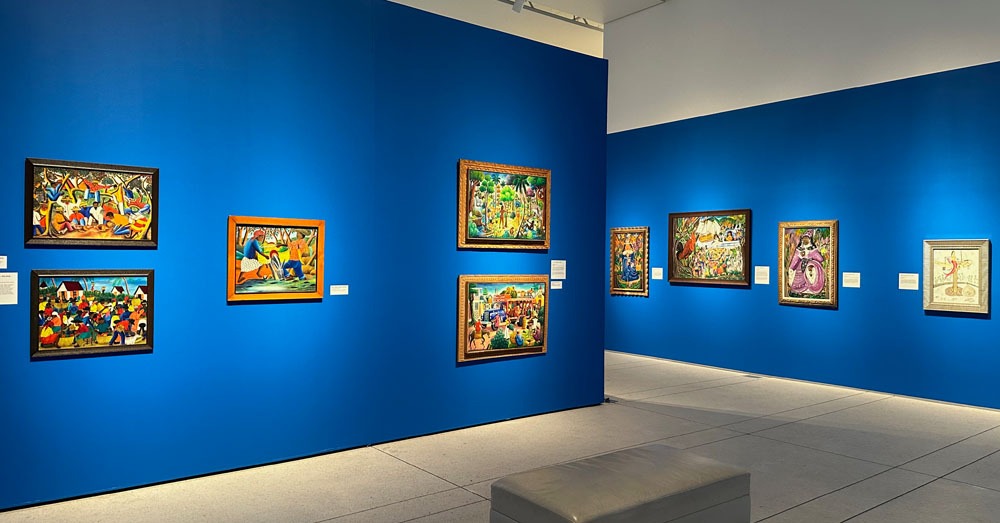

There’re the lively compositions of Haitian art from the Albrecht and Heller Collections depicting rainbow aspects of life pulsating in full sunlit colors.
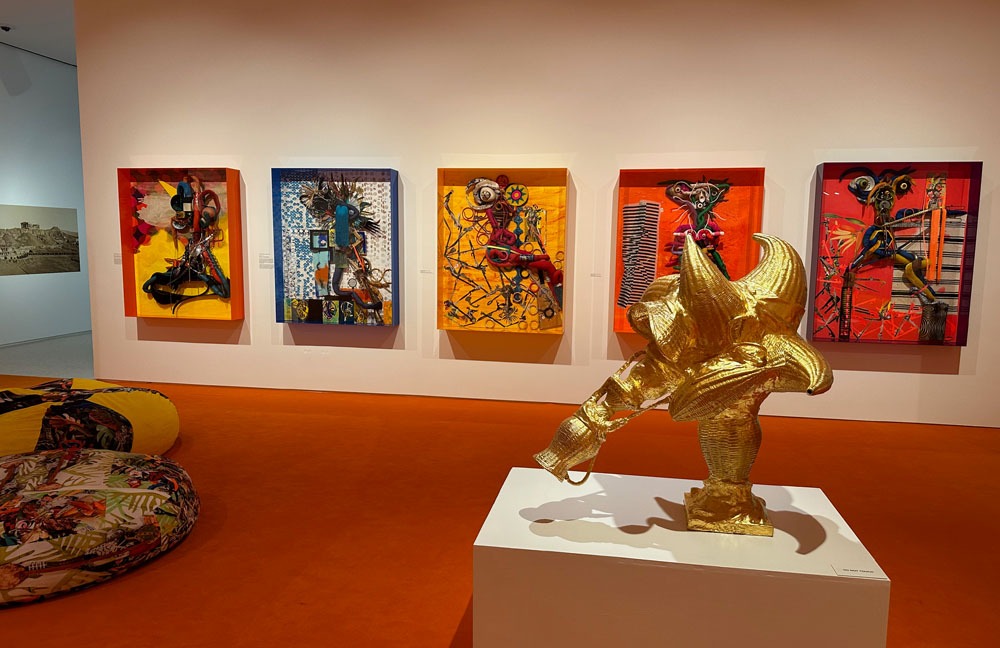
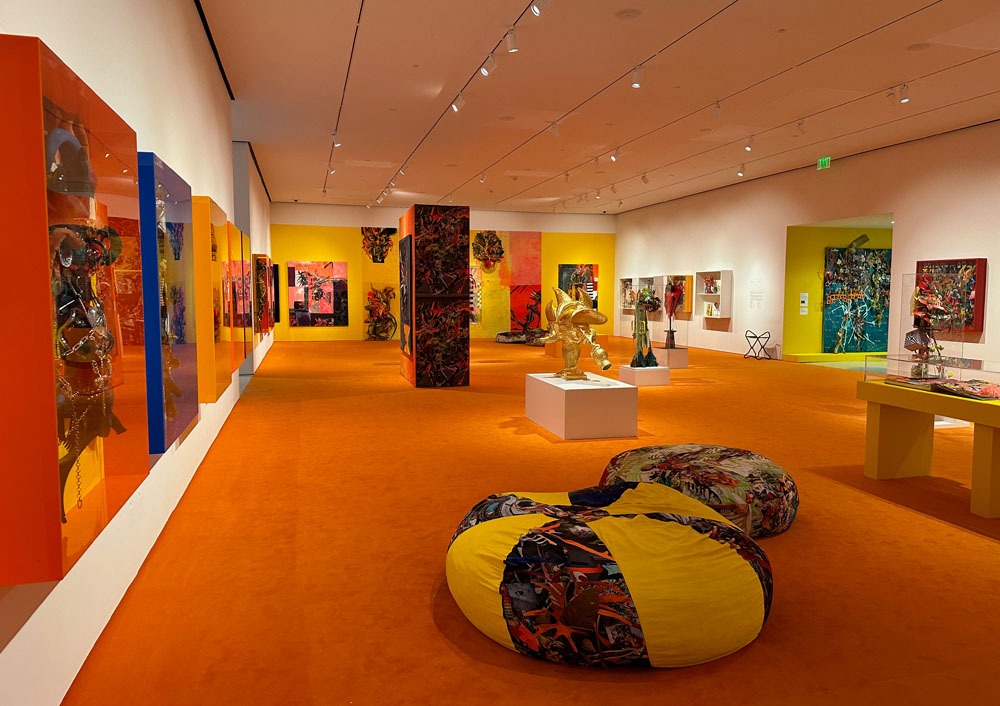
There’s Mexico’s Pepe Mar with his Myth and Magic realities defying categorization.
Several galleries comprise works curated from TMA’s permanent collection, spanning antiquities to contemporary works.

And there’s the Frontiers of Impressionism – Paintings from the Worcester Art Museum, a blast from a very revolutionary period in western art history’s past.
If you like to experience culture shocks, eye-dilating vibrations and the relevance of your own thinkings, walk back and forth between these galleries.
It is a leaping journey through time, color spectrums and human conditions, to see what a brushstroke can express. TMA has gleefully presented this buffet unencumbered – mirroring the equally-mixed neighborhoods beyond the museum walls.
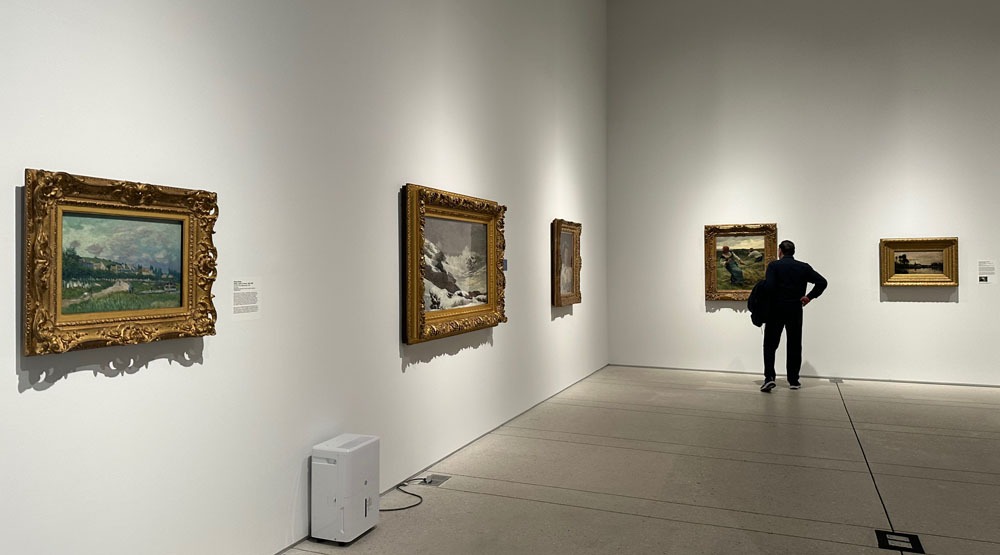
For the moment, let’s linger with the Impressionists where modern art-making made its official debut.
As the exhibition title states, the paintings are from the Worcester Art Museum.
The museum, located in Worcester, Massachusetts about 50 miles west of Boston, began collecting art of its time right from its inception in 1896, when impressionism by then had matured into its own identity.
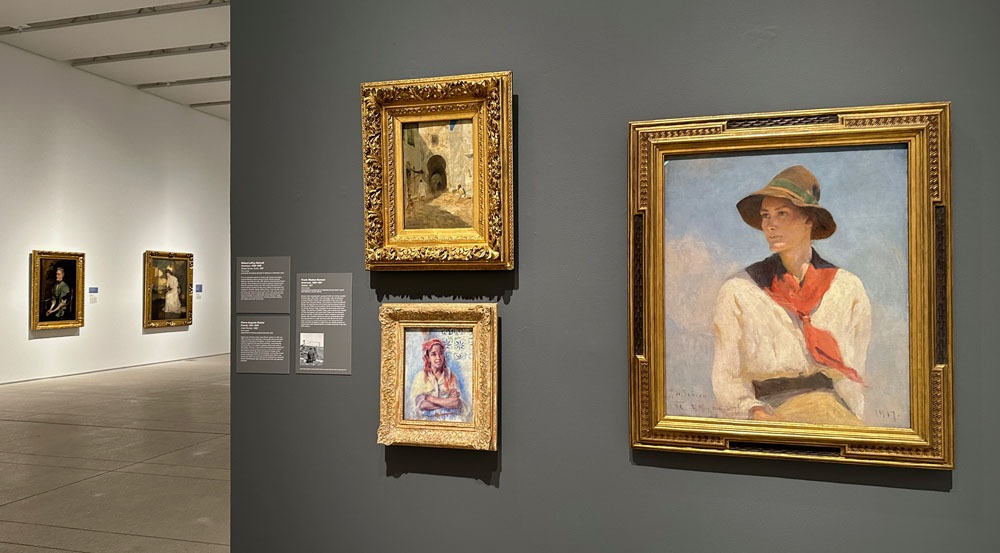
About 20 years prior, at an exhibition organized by a new generation of independent artists calling themselves the Anonymous Society of Painters, Sculptors, Printmakers, artist member Claude Monet hung a painting titled Impression, sole levant (Impression, sunrise).
The art critic Louis Leroy viewed the show and turned Monet’s painting title into a derisive adjective, calling works in the exhibition unfinished sketches, just impressions. Thus the moniker identifying this new art form and group of artists was born.
There’s a palpable atmospheric change walking into this exhibition of 53 paintings, many in their original gilded intricate frames hailing from another era. The warm gray of the gallery partition walls quiets the mood.
In one section of the gallery is a group of proto-impressionist works.

Indicative of this beginning is a painting La récolte de pommel en Normandie (Apple Harvest in Normandy) by French artist Constant Troyon. It depicts a rural scene of thatched roof houses against a cloudy sky, midst a mother tending a child, laundry out drying, a person on horseback and farmers on ladders picking apples.
From the exhibition label. . . His extraordinary capacity to capture the nuance of light – here, filtered through the cloudy sky and leaves of the apple tree – won his work admiration among the impressionists.
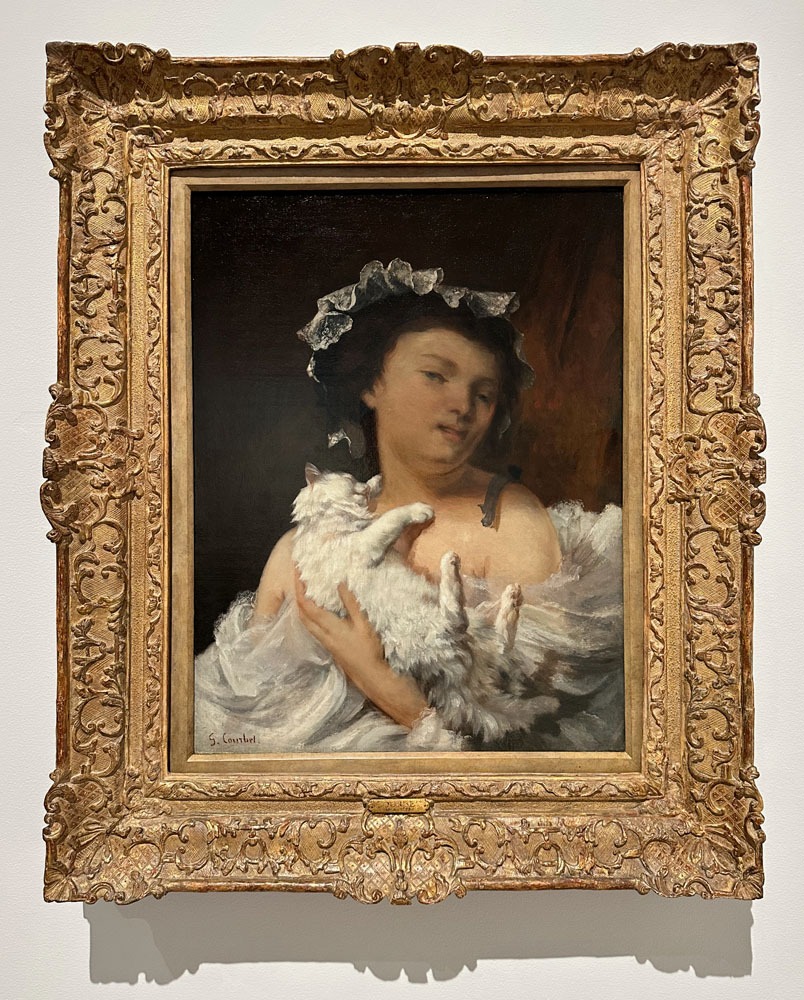
I really like this Gustave Courbet painting La femme au chat (Woman with a Cat), with his masterful “rough” brush work. There’re not a few internet videos of people interacting with their cat thusly.
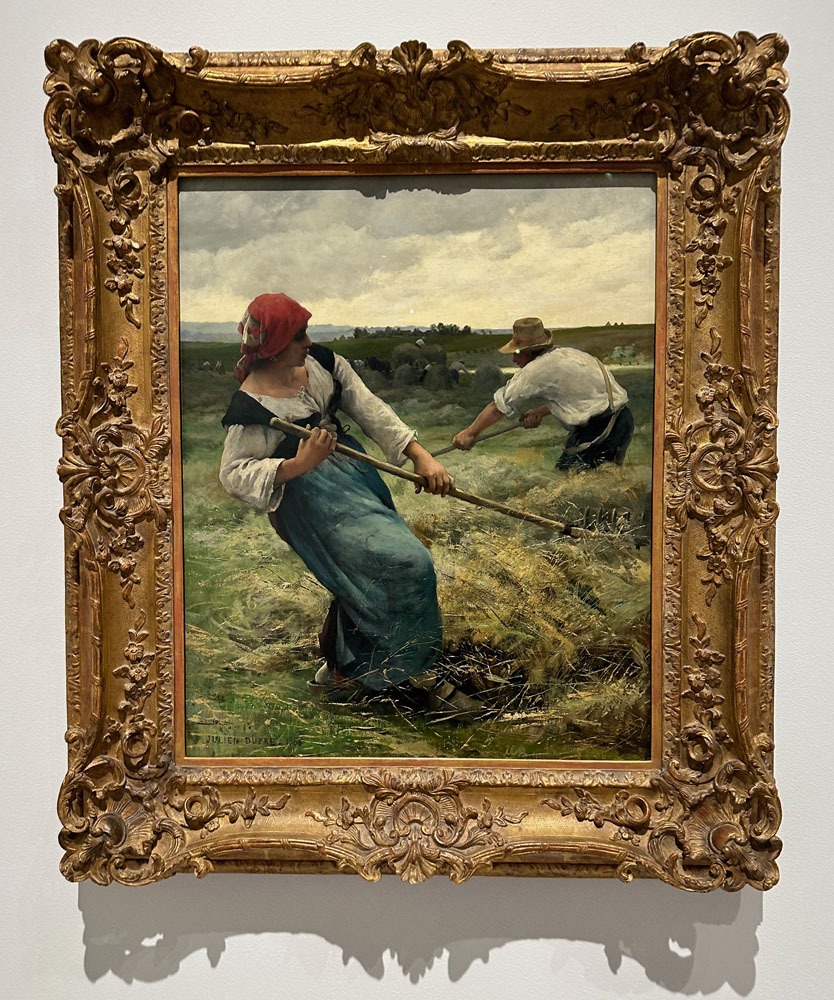
A mood-setting painting is Les finesses (The Haymakers) by Julien Dupré. This brings to mind less idealized versions of peasant workers as depicted in Jean-François Millet’s The Gleaners or Man with the Hoe, or his famous The Angelus.
Dupré is wistful in the disappearing countryside as industrialization begins to dominate the landscape. What would he make of the world today?

Bracing the brisk sea air, there’s Winslow Homer’s Coast in Winter.
Homer was exposed to the Barbizon artists (precursors to the impressionists) during a visit to France. He simply Americanized that whole outdoor landscape plein-air loose brushwork gestural style.
The exhibition label expands. . . Long before the French impressionists took their canvasses outdoors, Homer embraced open-air painting as an integral part of his practice.
In all, these varying perceptions spurred the impressionists on in their rejection of the formalism of salon art that was the standard of the time, forging their own views of the world and translating that on canvas.

As there was a beginning, there is an end.
Opposite from the proto-impressionists is a selection of post-impressionist paintings, which the exhibition didactic panel explains. . . Critics of impressionism focused their appraisals on what they perceived as the movement’s limited subject matter – specifically landscape paintings – and superficiality in capturing atmosphere and visual impressions. Post-impressionists movements began to move to more abstract modes of representation that emphasized the exploration of elements such as color, symbolism or form.
An example of one such direction is Olive Trees by Georges Braque, with its striking lines of paint against distant hills, with colors from imagination rather than nature, aligned more towards Fauvism.
There’s no gentle play of light filtering through the leaves as in Constant Troyon’s Apple Harvest mentioned above. Perhaps this deviation led to Mondrian’s series of tree abstractions later in European art.
I like this painting, energetic with its flat brush strokes flying in directions of their own choosing, disjointed, free from the representation of branches.
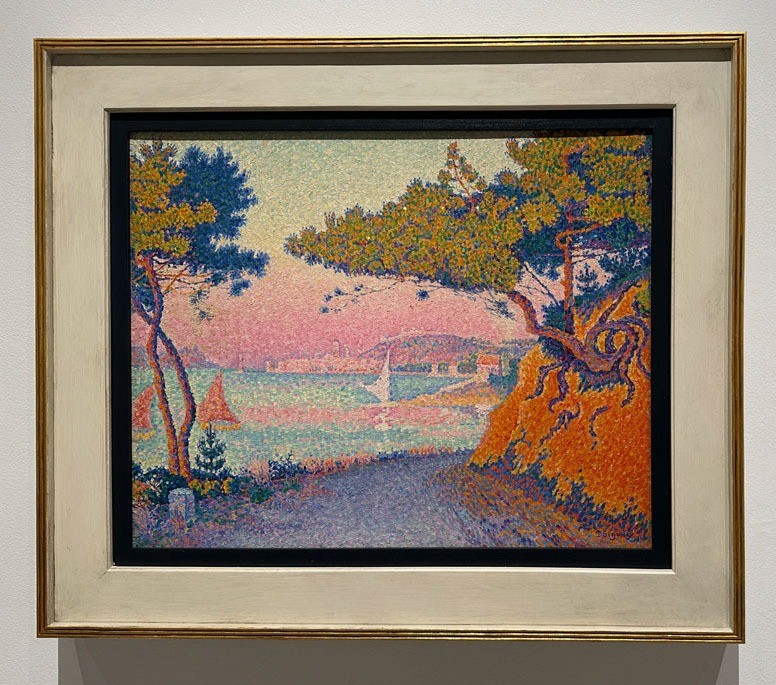
A step away from impressionism is the Paul Signac’s Golfe Juan. He breaks impressionism’s brush strokes down into little dots, in a technique dubbed pointillism – he and George Seurat are its most renowned practitioners.

Another diverging direction is Lovis Corinth’s Vor dem Spiegel (At the Mirror) towards expressionism. Originally a proponent of impressionism in Germany, Corinth suffered a stroke, limiting his movements and altering his painting style to became more loose and expressionist, thus unwittingly joining him to the remarkable German Expressionist movement.
Corinth’s works were condemned as degenerate art by Nazi authorities, and they put nine of his paintings in their 1937 Degenerate Art Exhibition.
The impressionism journey between this bracket of proto- and post- took many forms.

The most celebrated is Claude Monet, whose Nymphéas (Water Lilies) is hung on the title wall, signifying its iconic status.
While Paris was the hub of this innovation, its influences reached throughout Europe and across the Atlantic to the United States, with each geographic location infusing their own complexion.
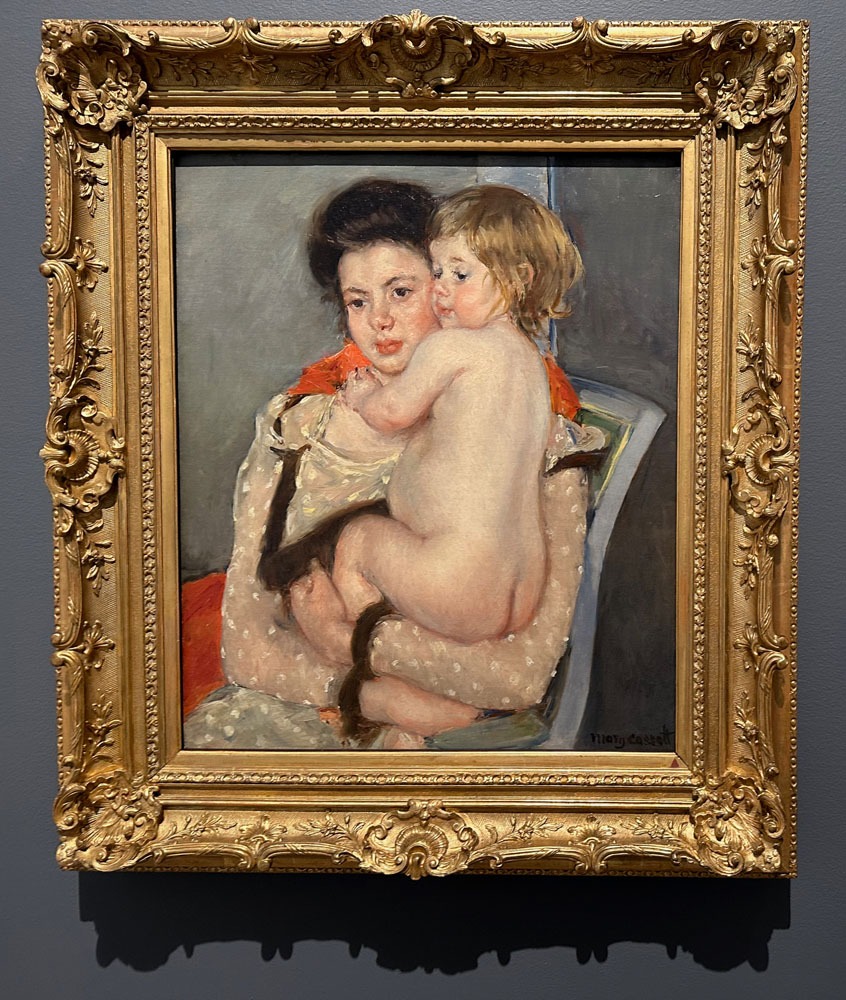
One American who studied in Europe and was accepted into several Paris Salon exhibitions, Mary Cassatt, would ultimately adopt impressionist methods and innovations. She was the only American to exhibit in the independent impressionist exhibitions.
As an impressionist, who later in life fought for women’s suffrage and their causes, Cassatt eschewed the plein-air landscapes and focused on images of women and mothers and children. An example is her Reine Lefebvre Holding a Nude Baby (Mother and Child). Lefebvre was a cook at Cassatt’s country chateau and often modeled for her.
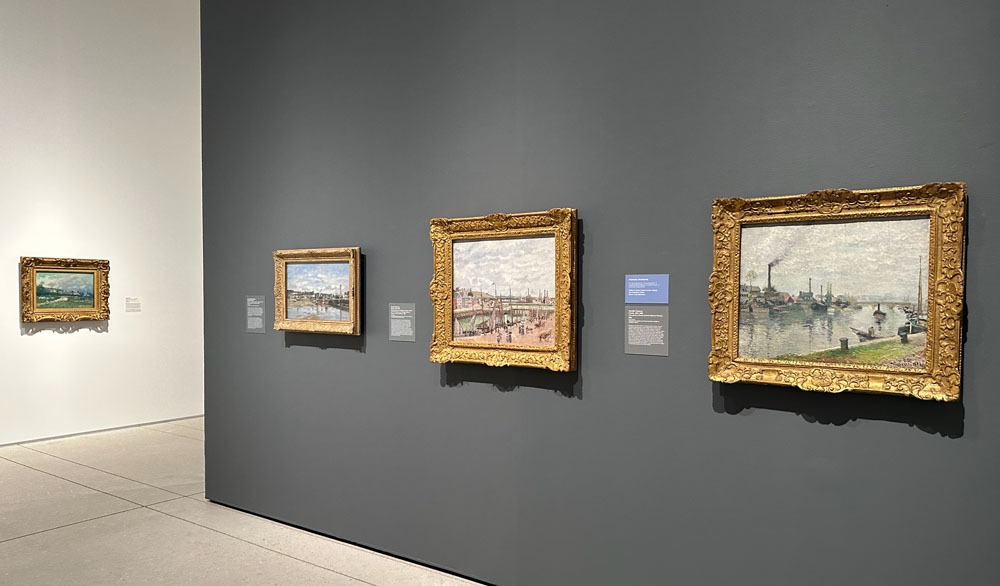
There’re two landscapes, more like riverscapes of ports by Camille Pissarro who was influential to many artists including Mary Cassatt – and was the only artist to exhibit in all eight of the impressionists’ independent exhibitions.
Both L’île Lacroix à Rouen (Lacroix Island at Rouen) and Bassins Duquesne et Berrigny à Dieppe, temps gris (The Duquesne and Berrigny Basins at Dieppe, Overcast Weather) are small paintings, and it’s amazing so much can be conveyed with these little splotches of paint, probably from wielding equally small brushes.
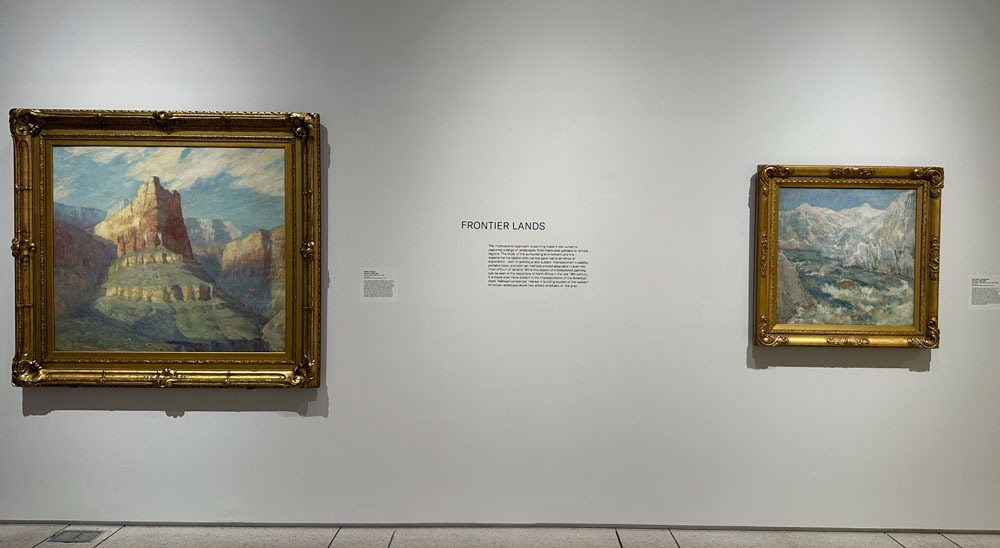
From the high culture of Paris to the wild wild west of the United States, or frontier lands, artists’ eyes were widened by the vast horizon, moving them to break the landscapes boundaries of traditional European formats – in a similar fashion Land Art of the 1960s took the idea of art out of galleries and museums altogether.
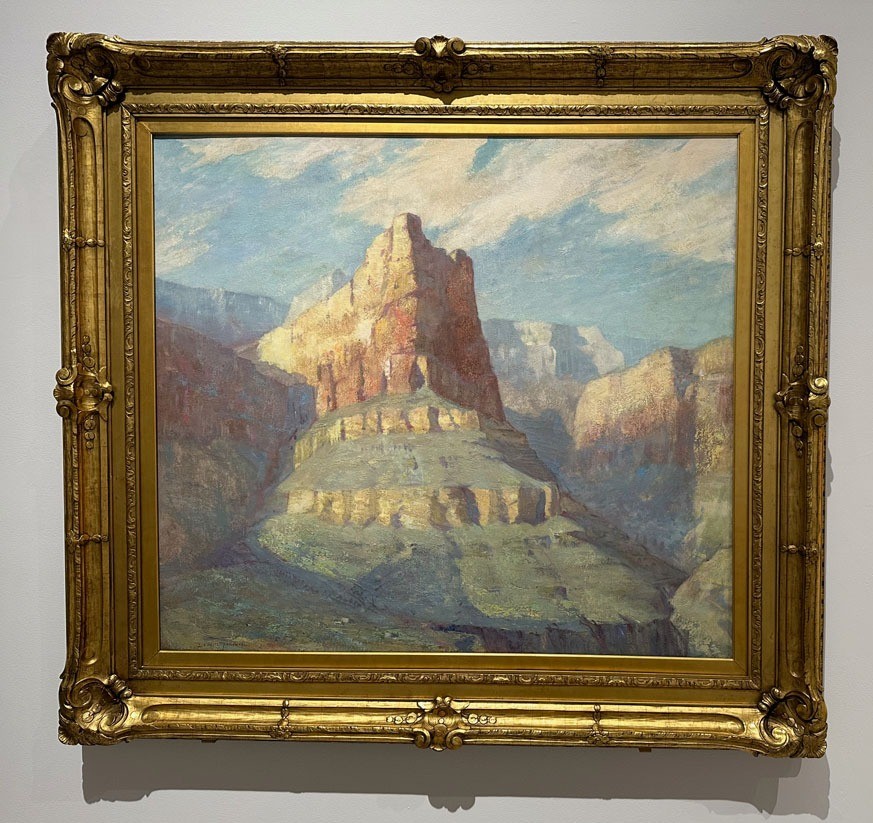
One soaring example is DeWitt Marshall’s Hermit Creek Canyon, a majestic section of the Grand Canyon where he captured the sunlight reflecting off the canyon walls. The distant ridges of the canyon are reminiscent of Monet’s haystack series.

The painting that is perhaps my favorite in the whole show is Sylph’s Rock, Appledore by Childe Hassam. Appledore is an island off the coast of New Hampshire and Maine.
The exhibition label has this wonderful descriptive sentence. . . Deeply aware of the transience of nature, Hassam captured Appledore Island at different vantage points and circumstances to explore the idea that no location was ever the same twice.
This echos the Greek philosopher Heraclitus’s thoughts that a person cannot step into the same river twice.
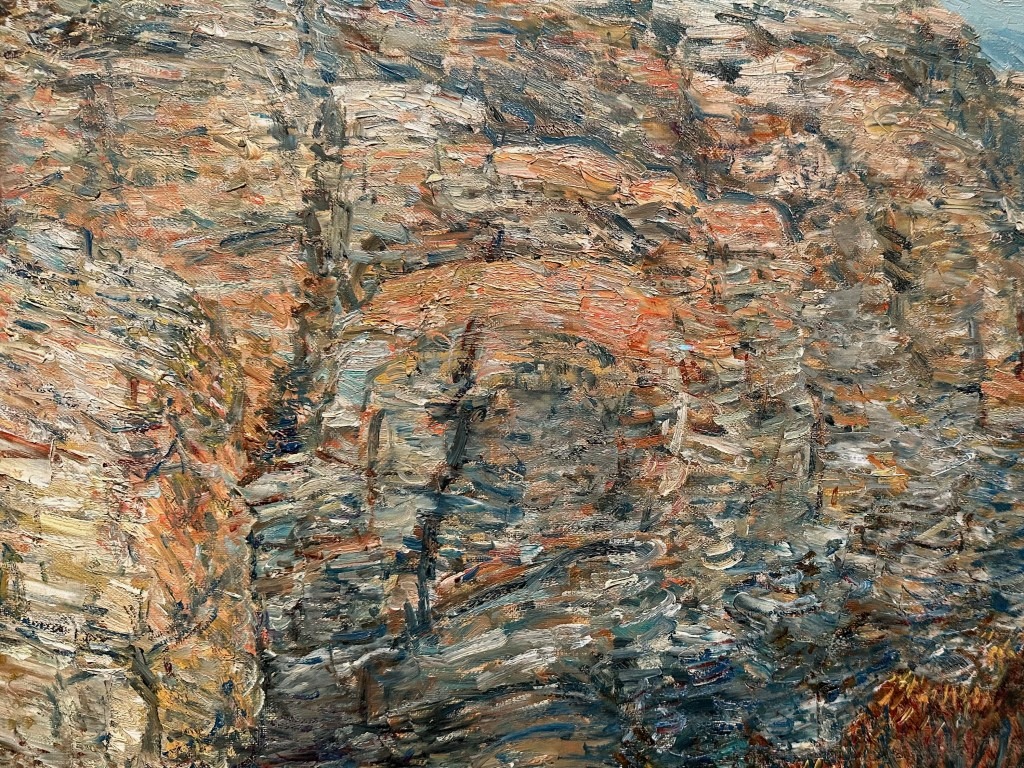
The painting is portrait of a rock jutting out into the sea with a distant horizon. Maybe it’s the memory of my one semester of geology in college, but I think a person who actually finished their degree and is a practicing geologist would also be thrilled seeing the eons of Earth’s history exposed on this rock moored inside this ornate frame.
There must be hundreds if not thousands of dashes and spots of paint expertly modeling the rock’s many crevices, lumps, depressions and textured surface. The painting is a painter’s palette endlessly mixing and experimenting.
If you cannot make it to this exhibition’s during its run in Tampa, you can go to the Tokyo Metropolitan Art Museum in Japan where it will travel to next.
Or visit the Worcester Art Museum where the rest of their impressionism collection is on exhibit.





